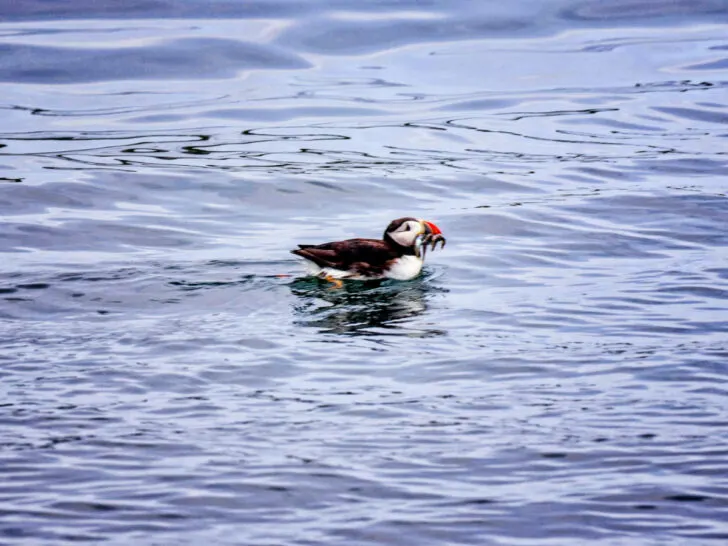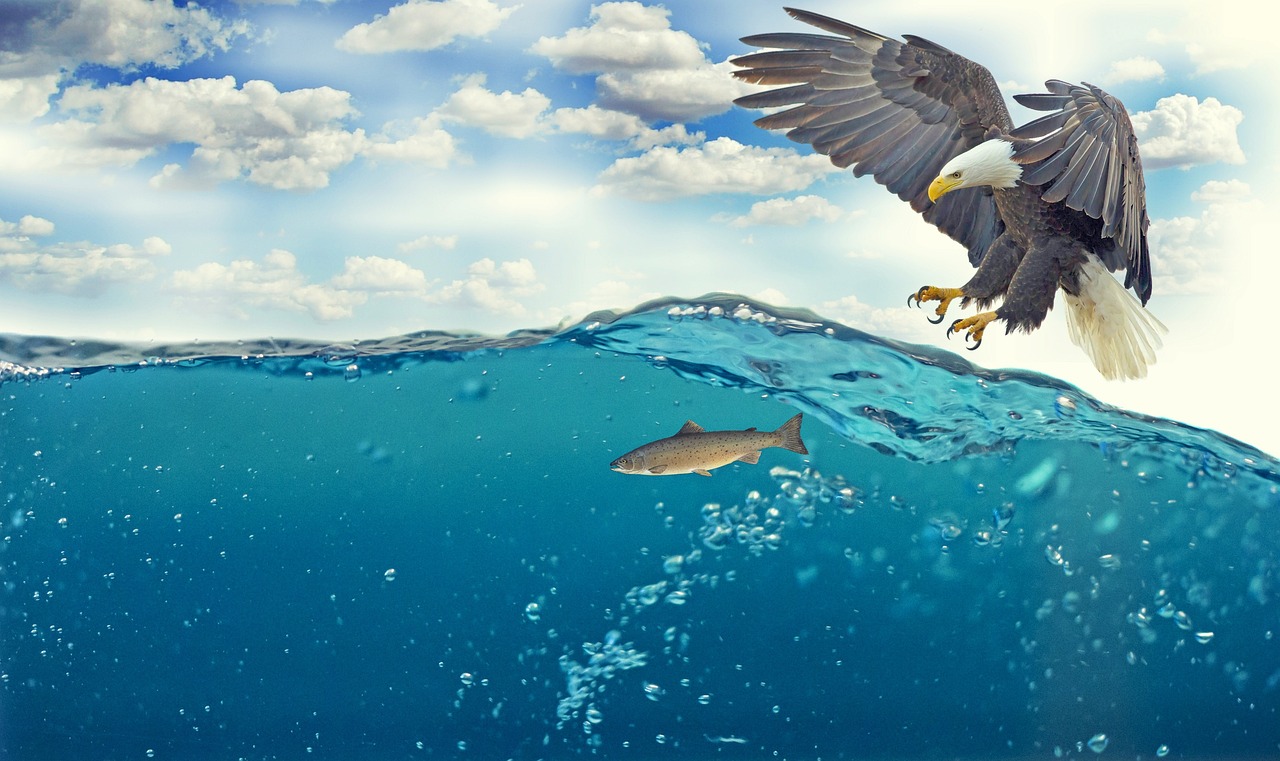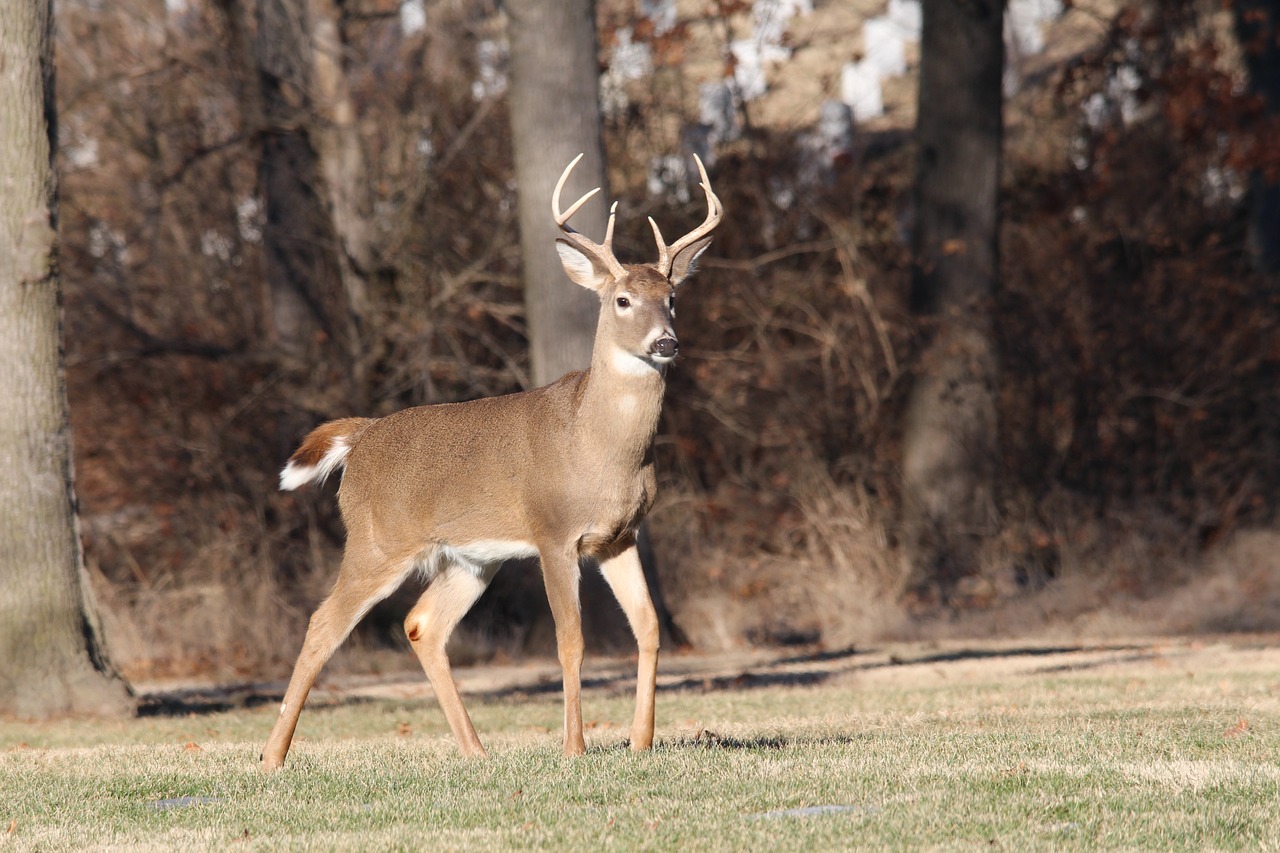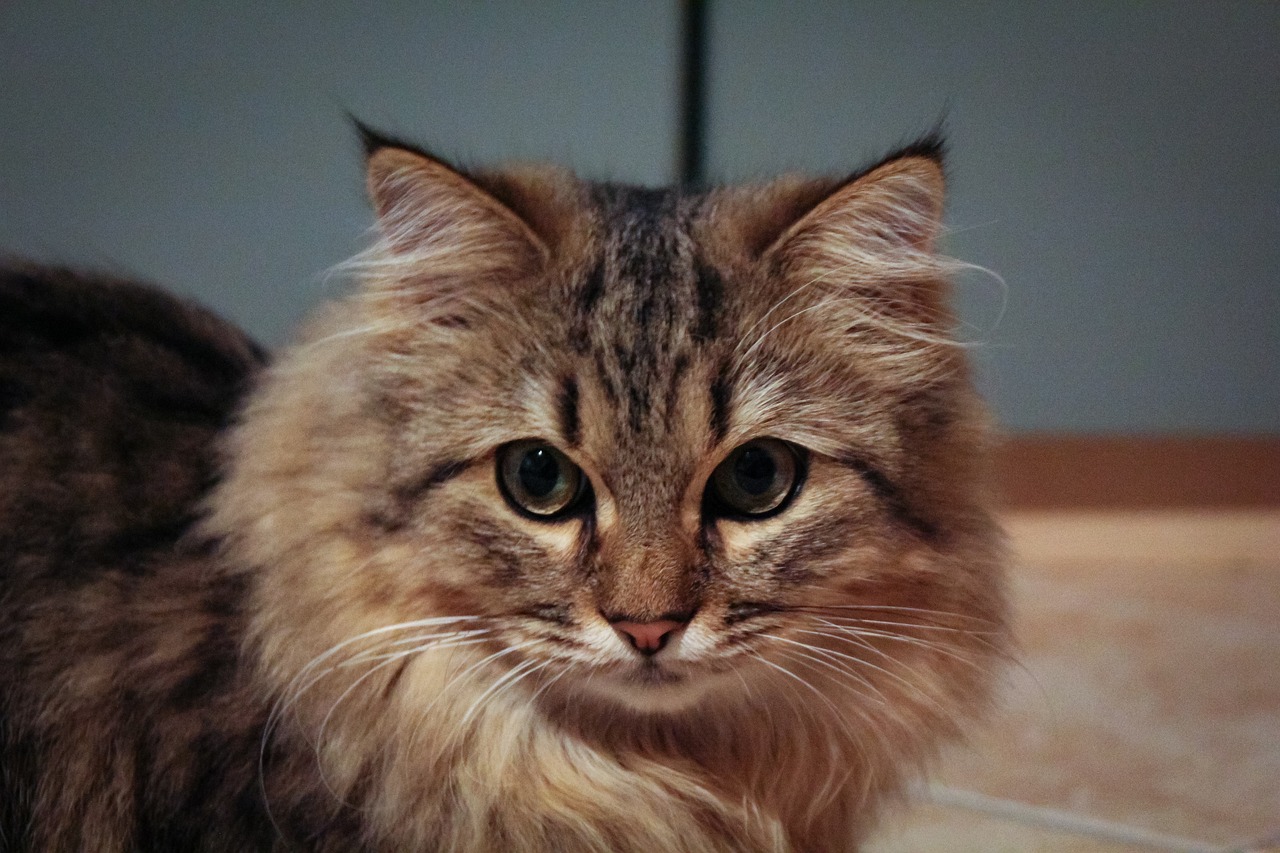Introduction
Maine’s diverse landscapes, which encompass pristine forests, rugged coastlines, and pristine lakes, provide a haven for an incredible array of wildlife. From the iconic moose to the majestic bald eagles soaring above, Maine’s wilderness is a tapestry of life teeming with unique and awe-inspiring creatures. In this article, we embark on a journey to discover the remarkable wildlife of Maine and their significance in the state’s natural heritage.
Maine’s diverse landscapes not only provide a picturesque backdrop for wildlife but also offer a critical sanctuary for a wide range of species. The state’s natural diversity, from the densely forested interior to the dramatic coastal environments, is the foundation upon which its rich biodiversity thrives.
Pristine Forests: A Habitat for the Wild
Maine’s extensive forests are more than just a collection of trees; they are a sanctuary for countless species. The towering conifers and deciduous trees provide shelter, food, and breeding grounds for a remarkable array of creatures. From elusive lynx and bobcats to playful red foxes and curious raccoons, Maine’s forests teem with life. For smaller creatures like red squirrels and chipmunks, these woodlands offer both refuge and sustenance.
Rugged Coastlines: A Seabird Haven
Maine’s dramatic coastlines, dotted with windswept cliffs and secluded coves, are also bustling hubs of wildlife activity. Seabirds like puffins, razorbills, and guillemots find refuge on remote islands and sea stacks, where they nest and raise their young. The pristine waters around these coastal areas support thriving populations of harbor seals, porpoises, and even the occasional whale sighting, making it a haven for marine life enthusiasts.
Pristine Lakes and Rivers: A Aquatic Abundance
Maine’s abundance of lakes and rivers sustains an impressive aquatic ecosystem. Beyond the mirror-like surfaces of its lakes and tranquil flows of its rivers, the underwater world is a complex network of life. Brook trout and landlocked salmon swim in the clear waters, while beavers engineer intricate wetland habitats that benefit countless species. Bald eagles, ospreys, and kingfishers are often seen hunting along these waterways, their presence a testament to the health of the ecosystem.
Interconnected Habitats: A Wildlife Mosaic
What makes Maine truly remarkable is the interconnectedness of these habitats. The forested landscapes connect to the waterways, providing corridors for creatures to move freely. The pristine forests, for instance, are crucial for moose, who find ample forage and respite in the wooded terrain and then journey to lakes and rivers for water and cooler temperatures during the hot summer months.
Tourism and Conservation: A Balancing Act
Maine’s wildlife thrives not just because of its natural beauty but also because of the commitment to responsible tourism and conservation. The state’s parks, wildlife refuges, and protected areas ensure that these habitats remain untouched by development, preserving the sanctuaries for generations to come. At the same time, tourism enables people to experience the wonders of Maine’s wildlife while fostering a deeper appreciation for the need to protect it.
Conclusion: A Tapestry of Life
Maine’s wildlife is not a mere part of the state’s landscape; it is the very fabric of its natural heritage. From the depths of its forests to the heights of its cliffs, from the quiet lakeshores to the rushing rivers, Maine’s landscapes provide a sanctuary for a remarkable array of creatures. This intricate tapestry of life is a testament to the state’s commitment to preserving its natural heritage, ensuring that the wild wonders of Maine continue to inspire and captivate all those who embark on a journey to discover its remarkable wildlife.
Looking for more insights? You’ll find them right here in our extended coverage: Umbagog National Wildlife Refuge | U.S. Fish & Wildlife Service
One of the most iconic symbols of Maine’s wilderness is the moose. These majestic, solitary creatures are often spotted in the northern reaches of the state. Maine’s vast forests provide an ideal habitat for moose, offering ample food and shelter. Encounters with these gentle giants are a highlight of any visit to the Maine wilderness.
One of the most iconic symbols of Maine’s wilderness is the moose. These majestic, solitary creatures are often spotted in the northern reaches of the state, their imposing silhouettes blending seamlessly with the rugged landscapes. Maine’s vast forests provide an ideal habitat for moose, offering ample food and shelter amidst the towering pines and tranquil lakes. Encounters with these gentle giants are a highlight of any visit to the Maine wilderness, filling visitors with awe as they witness the sheer grace and enormity of these creatures.
Each moose sighting is a moment frozen in time, a connection to the untamed heart of Maine. These animals, with their towering antlers and stoic presence, embody the spirit of the wilderness, reminding us of the unyielding beauty and resilience of nature. Watching a moose as it grazes near a serene pond or silently traverses the forest is a testament to the harmony that can exist between humanity and the natural world.
Moose also serve as ambassadors of conservation, urging us to protect their fragile habitats. As we revel in the wonder of these magnificent animals, we are reminded of our responsibility to preserve the pristine wilderness that sustains them. Maine’s moose, with their quiet strength and elegance, inspire us to become stewards of the land, ensuring that future generations can share in the magic of encountering these incredible creatures in the heart of the Maine wilderness.
Additionally, you can find further information on this topic by visiting this page: Moosehorn Wilderness | Wilderness Connect

Maine is home to one of the densest populations of bald eagles in the lower 48 states. These magnificent birds of prey, with their striking white heads and powerful talons, are often seen along the state’s coastline and around its numerous lakes. Bald eagles symbolize both the resilience of wildlife conservation efforts and the majesty of Maine’s wilderness.
nullShould you desire more in-depth information, it’s available for your perusal on this page: bald eagle Archives – Maine Nature News

The whitetail deer is a common sight in Maine’s woodlands. These graceful creatures are known for their distinctive tails and graceful leaps through the forest. They are a vital part of Maine’s ecosystem, playing a role in seed dispersal and contributing to the balance of predator-prey relationships in the wilderness.
The whitetail deer, a common sight in Maine’s woodlands, paints a picture of the state’s natural beauty and ecological significance. These graceful creatures, with their distinctive tails and agile leaps through the forest, embody the essence of wilderness in this northeastern gem of the United States.
Maine’s whitetail deer population is not only a testament to the state’s thriving biodiversity but also a vital component of its delicate ecosystem. Their role extends far beyond their striking appearance. These creatures play an essential role in the intricate web of life that exists in Maine’s wild landscapes.
One of their notable contributions lies in seed dispersal. As whitetail deer roam the woodlands, they inadvertently assist in the distribution of seeds from various plant species. Seeds often attach themselves to the deer’s fur or hooves, hitching a ride to new locations. This dispersal aids in the rejuvenation and diversification of the forest floor, ensuring the continuation of a rich variety of plant life. Without their involvement, the ecosystem’s capacity to regenerate and adapt to changing environmental conditions would be significantly diminished.
Moreover, the whitetail deer’s presence contributes to maintaining a balanced predator-prey relationship in the wilderness. Their role as prey animals serves as a vital food source for several native predators, including coyotes, bobcats, and even the occasional mountain lion. This dynamic balance ensures that the populations of both prey and predator remain in check, preventing overpopulation of one or the other, which could otherwise disrupt the natural order of the ecosystem.
Furthermore, the cycle of life and death that involves whitetail deer contributes essential nutrients to the forest floor. When these creatures die, whether from natural causes or predation, their bodies become a source of sustenance for scavengers like carrion-eating birds and mammals, as well as for soil-dwelling organisms. This process completes the circle of life, enriching the soil and promoting overall ecosystem health.
In Maine’s woodlands, the whitetail deer symbolizes the interconnectedness of all living beings in the natural world. They remind us that every creature, no matter how graceful or seemingly inconspicuous, has a unique role to play in maintaining the balance and resilience of the ecosystem. Thus, while they are undoubtedly a captivating sight in Maine’s wilderness, their true value lies in the hidden threads they weave within the tapestry of this remarkable ecosystem.
To expand your knowledge on this subject, make sure to read on at this location: Species Profiles – Colorado Parks & Wildlife

Maine’s pristine lakes and ponds are graced by the presence of loons. These waterfowl are known for their haunting, echoing calls that reverberate across the tranquil waters. The common loon, with its striking black and white plumage, is a beloved symbol of Maine’s wilderness and a cherished sight for birdwatchers.
Maine’s pristine lakes and ponds are not just bodies of water; they are sanctuaries of serenity and natural wonder, graced by the enchanting presence of loons. These captivating waterfowl hold a special place in the hearts of Mainers and visitors alike, as their haunting and echoing calls create a timeless melody that reverberates across the tranquil waters, adding a unique charm to the state’s wilderness.
The common loon, with its striking black and white plumage, stands as an iconic symbol of Maine’s wild beauty. This elegant bird is a living emblem of the untamed north, embodying the essence of remote wilderness and undisturbed habitats. Its sleek and graceful silhouette gliding across the water’s surface is a sight that never fails to captivate the soul.
One of the most remarkable aspects of the common loon is its haunting call, which is an auditory hallmark of Maine’s lakeshores. The loon’s call is a symphony of wilderness, a voice that echoes through the pines and across the mirror-like surfaces of secluded lakes. It’s a sound that evokes a sense of solitude and timelessness, transporting you to a world untouched by the modern pace of life.
For birdwatchers, the opportunity to spot and observe common loons in their natural habitat is a cherished experience. Patiently waiting in the early morning mist or during the tranquil evenings, you may witness these magnificent birds as they dive beneath the water’s surface in search of fish or engage in their intricate courtship rituals. The image of a loon gracefully taking off from the water, its wings beating in slow motion, is a snapshot of pure, unspoiled wilderness.
Beyond their aesthetic allure, loons play a vital ecological role in Maine’s aquatic ecosystems. They are indicators of clean and healthy waters, as their sensitivity to pollution makes them a barometer of environmental quality. Efforts to protect and conserve loon habitats contribute to the preservation of the entire ecosystem, ensuring that future generations can continue to appreciate the beauty of these lakes and the haunting calls of their iconic inhabitants.
In the end, the common loon is not just a bird; it’s a guardian of Maine’s wilderness and a symbol of its unspoiled landscapes. Their presence on the state’s lakes and ponds is a testament to the importance of preserving these pristine environments, where the beauty of nature is both delicate and enduring, where echoing calls remind us of the timeless wonders that await those who venture into Maine’s untamed heart.
If you’d like to dive deeper into this subject, there’s more to discover on this page: The wilderness of the Northeast | U.S. Fish & Wildlife Service

Maine’s dense forests provide the perfect habitat for black bears. These elusive creatures are known for their strength and adaptability. While encounters with black bears in the wild are rare, they are a symbol of the untamed beauty of Maine’s wilderness.
Maine’s dense forests provide the perfect habitat for black bears, creating a haven where these elusive creatures thrive. Their presence in these woods is a testament to the incredible adaptability and strength of these iconic animals. Encounters with black bears in the wild may be rare, but when they do occur, they offer a glimpse into the untamed beauty of Maine’s wilderness and the harmonious relationship between these bears and their natural environment.
Black bears, with their jet-black fur and stocky builds, are the largest land mammals in Maine and play a vital role in the ecosystem. They are omnivores, opportunistic eaters that can adapt to a variety of foods depending on the season. Their diet includes berries, nuts, insects, and occasionally, small mammals and fish. This adaptability allows them to thrive in Maine’s diverse landscapes, from the dense forests of the interior to the coastal regions.
Encountering a black bear in the wild is a thrilling and humbling experience. Although these animals are often described as elusive, they are remarkably intelligent and possess a keen sense of smell, which they rely on heavily to locate food. Hikers and campers occasionally catch a fleeting glimpse of a bear foraging along the forest floor or climbing trees in search of sustenance.
However, it’s important to emphasize the need for responsible coexistence with these magnificent creatures. Maine’s Department of Inland Fisheries and Wildlife offers guidelines for bear safety, including proper food storage and waste disposal to minimize human-bear conflicts. By respecting these guidelines, visitors can ensure that their encounters with black bears are awe-inspiring and safe for both humans and bears alike.
The presence of black bears in Maine’s wilderness is a reminder that these forests are not just beautiful but also ecologically rich and balanced. These creatures play a crucial role in shaping the ecosystem, from seed dispersal as they consume berries to controlling the populations of smaller mammals. They are a symbol of the delicate and intricate web of life that thrives within the state’s dense forests.
So, while the chances of encountering a black bear in the wild are indeed rare, knowing that they roam these woods adds an element of mystery and wonder to the wilderness experience in Maine. Their existence serves as a powerful reminder of the importance of preserving and protecting the natural habitats that make Maine’s forests such a unique and cherished treasure.
To delve further into this matter, we encourage you to check out the additional resources provided here: Michigan’s Upper Peninsula Wildlife | Upper Peninsula

Along the rugged cliffs and rocky coastlines of Maine, peregrine falcons rule the skies. These birds of prey are known for their incredible speed and precision in hunting. They are a testament to the resilience of wildlife conservation efforts, as they were once endangered but have made a remarkable recovery.
nullExplore this link for a more extensive examination of the topic: Eagle Flight and Other Myths, Alaska Department of Fish and Game

Maine takes its role as a steward of its wildlife seriously. Conservation efforts, such as habitat preservation and responsible hunting and fishing regulations, ensure that these magnificent creatures continue to thrive in the state’s wilderness.
Responsible tourism also plays a crucial role in protecting Maine’s wildlife. Visitors are encouraged to enjoy wildlife from a respectful distance, avoid feeding wild animals, and follow Leave No Trace principles to minimize their impact on natural habitats.
Maine’s dedication to serving as a responsible steward of its wildlife reflects a deep commitment to preserving the natural balance and beauty of the state’s wilderness. Through a combination of conservation initiatives, responsible outdoor activities, and fostering awareness among residents and visitors alike, Maine strives to ensure the continued thriving of its magnificent creatures.
One of the cornerstones of Maine’s wildlife stewardship is habitat preservation. The state recognizes the intrinsic value of its diverse ecosystems and works diligently to protect them. Efforts are made to designate and safeguard critical habitats for species like the iconic moose, elusive bobcat, and majestic bald eagle. By setting aside these areas as sanctuaries, Maine provides a safe haven where wildlife can flourish without undue human interference.
Additionally, responsible hunting and fishing regulations are carefully crafted to strike a balance between outdoor recreation and wildlife conservation. These regulations are based on extensive research and population management strategies, ensuring that hunting and fishing activities are sustainable and do not pose a threat to the long-term health of wildlife populations. It’s a delicate dance that combines the traditions of outdoor sportsmanship with the principles of ecological responsibility.
Responsible tourism also plays a pivotal role in safeguarding Maine’s wildlife. Visitors are encouraged to embrace a code of ethics that emphasizes observing animals from a respectful distance. This approach not only ensures the safety of both humans and wildlife but also prevents undue stress on animals and their habitats. Visitors are educated about the importance of not feeding wild animals, as this can disrupt natural behaviors and potentially harm the animals involved.
Furthermore, the Leave No Trace principles are emphasized to all who explore Maine’s wilderness. These guidelines encourage visitors to minimize their impact on the environment, from packing out all trash to camping in designated areas. By adhering to these principles, tourists help maintain the integrity of natural habitats, ensuring that wildlife continues to have spaces where they can thrive undisturbed.
In this way, Maine’s commitment to responsible wildlife stewardship extends beyond its borders, as it seeks to educate and inspire all those who venture into its natural wonderland. The goal is not only to protect the state’s wildlife but also to instill a deep sense of responsibility and reverence for the natural world in everyone who experiences it.
In conclusion, Maine’s role as a steward of its wildlife is a testament to the state’s dedication to preserving its natural heritage. Through habitat preservation, responsible hunting and fishing practices, and responsible tourism, Maine ensures that its wildlife continues to thrive in the wild, and that the legacy of its breathtaking landscapes remains intact for future generations to enjoy.
For a comprehensive look at this subject, we invite you to read more on this dedicated page: The Wildlife Refuges of I-95 | U.S. Fish & Wildlife Service

Maine’s wilderness is a sanctuary for wildlife, providing refuge for a diverse array of species, from moose to bald eagles. The state’s commitment to conservation and responsible tourism ensures that these creatures will continue to inspire awe and wonder for generations to come. As visitors explore the wild landscapes of Maine, they not only connect with nature but also become part of the ongoing effort to protect and preserve this precious natural heritage.
Maine’s wilderness is not only a haven for outdoor enthusiasts but also a sanctuary for a rich tapestry of wildlife. In this pristine realm, where nature’s majesty reigns supreme, visitors have the unique opportunity to witness a thriving ecosystem that includes a wide range of remarkable species:
Majestic Moose: The iconic moose, an emblem of the northern wilderness, calls Maine home. Visitors might be fortunate enough to spot these magnificent creatures, with their imposing antlers and gentle demeanor, ambling through the forests or wading in serene lakes.
Bald Eagles Soaring: Bald eagles, America’s majestic national symbol, grace the skies above Maine’s wilderness. Their soaring flights and formidable presence add to the sense of wonder in this untamed landscape.
Whitetail Deer: In the quieter corners of Maine’s wilderness, whitetail deer gracefully roam through the woods. These elegant creatures, with their dappled coats and graceful leaps, are a testament to the harmony of the natural world.
Red Foxes and Coyotes: Red foxes and coyotes, the clever and adaptable canids, thrive in the diverse ecosystems of Maine. Their presence is a reminder of the intricate web of predator and prey that sustains the wilderness.
Avian Abundance: Maine’s wilderness is a birder’s paradise. From the haunting calls of loons on pristine lakes to the colorful plumage of songbirds in the trees, birdwatchers are treated to a symphony of avian life.
Raptors and Owls: Beyond the songbirds, the wilderness is home to a variety of raptors, including owls and hawks. Their keen eyes and stealthy hunting skills are awe-inspiring to witness.
Black Bears and Lynx: While elusive, black bears and lynx are native residents of Maine’s wilderness. These secretive creatures serve as a reminder of the wilderness’s wild and remote character.
Small Mammals: The undergrowth teems with smaller mammals, including beavers, porcupines, and red squirrels. Observing their industrious activities adds a layer of fascination to the wilderness experience.
Aquatic Wonders: The lakes and rivers of Maine’s wilderness are teeming with aquatic life, from colorful brook trout to playful river otters. These creatures thrive in the pristine waters of the region.
Conservation Commitment: Maine’s commitment to conservation and responsible tourism ensures that these creatures and their habitats are protected. Efforts to preserve the wilderness and its inhabitants are essential to safeguarding this natural legacy for future generations.
Visitors to Maine’s wilderness not only have the privilege of connecting with nature but also become stewards of its future. By treading lightly, practicing responsible tourism, and supporting conservation efforts, they play a crucial role in preserving this precious natural heritage. As they witness the wonders of Maine’s wildlife, they become part of a collective effort to ensure that the moose, eagles, and all the creatures of the wilderness continue to inspire awe and wonder for generations to come.
For a comprehensive look at this subject, we invite you to read more on this dedicated page: Great Bay National Wildlife Refuge | U.S. Fish & Wildlife Service
More links
For a comprehensive look at this subject, we invite you to read more on this dedicated page: Rewards offered after shooting of bald eagle, moose in Maine